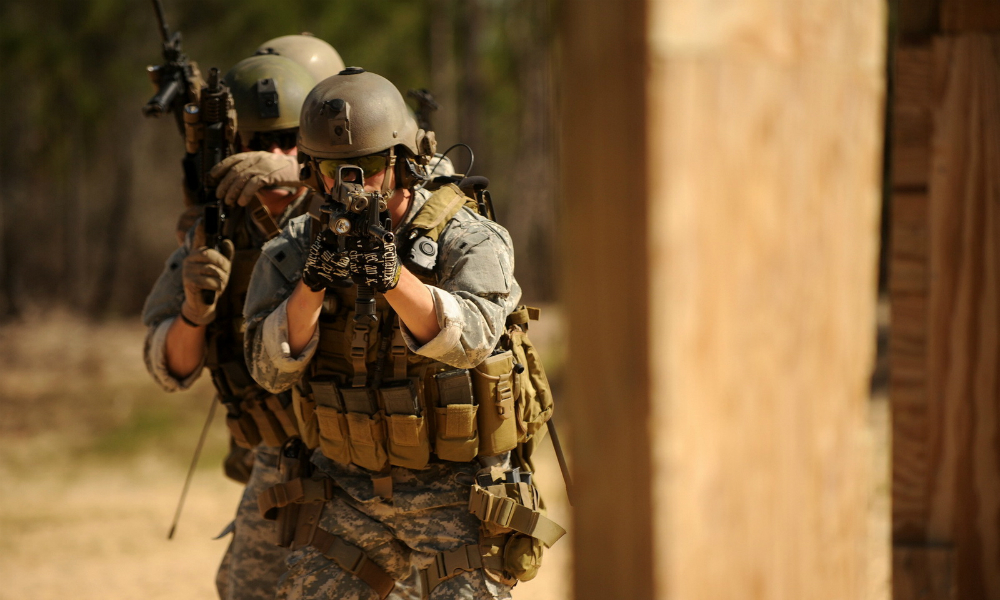
What is an example of irregular warfare?
Conflicts in Syria, Yemen, Libya, Iraq, Afghanistan, and Ukraine are examples of how both state and nonstate adversaries have used irregular warfare to advance their strategic goals.
What are the five pillars of irregular warfare?
They identify five core missions within irregular warfare: unconventional warfare, stabilization, foreign internal defense, counter-terrorism, and counter-insurgency.
What is the goal of irregular warfare?
IW is a form of warfare that has as its objective the credibility and/or legitimacy of the relevant political authority with the goal of undermining or supporting that authority.
What is the principle activity to counter irregular warfare activities?
There are principally five activities or operations that are undertaken in sequence, in parallel, or in blended form in a coherent campaign to address irregular threats: counterterrorism (CT), unconventional warfare (UW), foreign internal defense (FID)7, counterinsurgency (COIN), and stability operations (SO).
What are the three types of warfare?
Contents1.1 Political warfare.1.2 Information warfare.1.3 Three warfares.
What are asymmetric tactics?
asymmetrical warfare, unconventional strategies and tactics adopted by a force when the military capabilities of belligerent powers are not simply unequal but are so significantly different that they cannot make the same sorts of attacks on each other.
How does the Marine Corps prepare for irregular warfare?
Preparations for any conditions of warfare are done through training to address what is known (ballistics, weaponry, technology) and education to prepare for what is unknown (historical references for solutions). This allows us to balance the art and science of war.
Is irregular warfare a new phenomenon?
Irregular Competition. Irregular warfare today is merely the newest variant of an age-old struggle between competitors. Doing it well will require better understanding the nature of competition today and implementing a strategy and policies aligned with U.S. values.
What is the difference between asymmetric warfare and irregular warfare?
Asymmetric warfare is a form of irregular warfare – violent conflict between a formal military and an informal, less equipped and supported, understaffed but resilient and motivated opponent.
What is FID in military?
Foreign internal defense (FID) is the participation by. civilian agencies and military forces of a government. or international organization in any of the programs. or activities taken by a host nation (HN) government.
What does DoD Directive 3000.07 on irregular warfare?
When directed, DoD is able to: (1) Identify and prevent, contain, or defeat irregular challenges or threats from state and non-state actors across operational areas and environments. (2) Extend U.S. reach into denied areas and uncertain environments by operating with and through foreign forces or entities.
What is counterinsurgency?
Definition of counterinsurgency : organized military activity designed to combat insurgency.
What is the role of foreign fighters in Islamic extremism?
They tend to be more violent, more committed, and more resistant to reconciliation than their indigenous counterparts. Perhaps most significantly, they act as vectors of extremism, moving between zones of conflict, and sometimes returning to their countries of origin to ...
What challenges does the US military face?
The US military and its allies are faced with the challenges of shifting focus toward great power competition while still maintaining the ability to counter threats on the fringes.
Is the US reengaged with allies?
A new US administration is eager to reengage with both allies and competitors, reasserting the role of global leader that the United States has claimed since World War II. At the same time, former partners wary of indications of US withdrawal from the global stage no longer look to the ...
What are the roles of foreign fighters in Islamic extremism?
They tend to be more violent, more committed, and more resistant to reconciliation than their indigenous counterparts. Perhaps most significantly, they act as vectors of extremism, moving between zones of conflict, and sometimes returning to their countries of origin to instigate acts of terrorism. Our guests on this episode, Jasmine El-Gamal and Nate Rosenblatt, have researched the problem extensively for almost two decades. They predict that the next wave of extremism fueled by this phenomenon is gathering momentum even now and could pose an even greater threat to global security than its predecessors. Intro music: "Unsilenced" by Ketsa Outro music: "Launch" by Ketsa CC BY-NC-ND 4.0
Is the threat landscape worse now than it was on 9/11?
The United States and other nations have spent billions of dollars and invested untold effort, not to mention lives, in a global campaign against Islamist terrorism—and yet the threat landscape is arguably worse now than it was on 9/11. Despite the importance for national security of understanding how to wage irregular warfare effectively, something in the American way of war, the fundamental culture of the US military, prevents us from doing so. William Wechsler and retired Colonel Liam Collins join this episode to discuss the question of what needs to be done to reverse this trend and thus ensure that the United States can recover from the mistakes of the past, restore its credibility, and return to its place of prominence on the global stage.
What is irregular warfare podcast?
This podcast should prove to be valuable for the special operations professional as well as other members of the military. The podcast is brought us by the Modern War Institute at West Point and the Empirical Studies of Conflict Project of Princeton University.
Who is the host of irregular warfare?
The hosts of the Irregular Warfare Podcast are Kyle Atwell and Nick Lopez. Atwell is an active duty U.S. Army officer and Ph.D. student in Security Studies at Princeton University. He has had operational assignments in Afghanistan, South Korea, Europe, and Africa. His current research interests include military strategy, irregular and partnered warfare, and more. Lopez is an active duty Special Forces officer, a graduate of West Point, and currently engaged in graduate studies in preparation for an assignment as a Foreign Area Officer.
